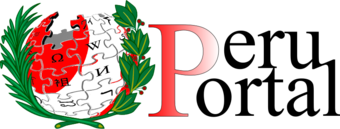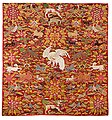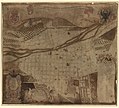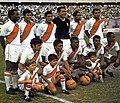Introduction
Peru, officially the Republic of Peru, is a country in western South America. It is bordered in the north by Ecuador and Colombia, in the east by Brazil, in the southeast by Bolivia, in the south by Chile, and in the south and west by the Pacific Ocean. Peru is a megadiverse country with habitats ranging from the arid plains of the Pacific coastal region in the west to the peaks of the Andes mountains extending from the north to the southeast of the country to the tropical Amazon basin rainforest in the east with the Amazon River. Peru has a population of over 32 million, and its capital and largest city is Lima. At 1,285,216 km2 (496,225 sq mi), Peru is the 19th largest country in the world, and the third largest in South America. Peruvian territory was home to several cultures during the ancient and medieval periods, and has one of the longest histories of civilization of any country, tracing its heritage back to the 10th millennium BCE. Notable pre-colonial cultures and civilizations include the Caral–Supe civilization (the earliest civilization in the Americas and considered one of the cradles of civilization), the Nazca culture, the Wari and Tiwanaku empires, the Kingdom of Cusco, and the Inca Empire, the largest known state in the pre-Columbian Americas. The Spanish Empire conquered the region in the 16th century and Charles V established a viceroyalty with the official name of the Kingdom of Peru that encompassed most of its South American territories, with its capital in Lima. Higher education started in the Americas with the official establishment of the National University of San Marcos in Lima in 1551. Peru's population includes Mestizos, Amerindians, Europeans, Africans and Asians. The main spoken language is Spanish, although a significant number of Peruvians speak Quechuan languages, Aymara, or other Indigenous languages. This mixture of cultural traditions has resulted in a wide diversity of expressions in fields such as art, cuisine, literature, and music. (Full article...) Entries here consist of Good and Featured articles, which meet a core set of high editorial standards.
 The guinea pig or domestic guinea pig (Cavia porcellus), also known as the cavy or domestic cavy (/ˈkeɪvi/ KAY-vee), is a species of rodent belonging to the genus Cavia in the family Caviidae. Breeders tend to use the name "cavy" for the animal, but "guinea pig" is more commonly used in scientific and laboratory contexts. Despite their name, guinea pigs are not native to Guinea, nor are they closely related to pigs. They originated in the Andes region of South America. Studies based on biochemistry and hybridization suggest they are domesticated animals that do not exist naturally in the wild, descendants of a closely related cavy species such as C. tschudii. They were originally domesticated as livestock for a source of meat, and are still consumed in some parts of the world. In Western society, the guinea pig has enjoyed widespread popularity as a pet since its introduction to Europe and North America by European traders in the 16th century. Their docile nature, friendly responsiveness to handling and feeding, and the relative ease of caring for them have continued to make guinea pigs a popular choice of household pet. Organizations devoted to the competitive breeding of guinea pigs have been formed worldwide. Many specialized breeds, with varying coat colors and textures, are selected by breeders. (Full article...)Selected image Photo credit: Bcasterline
Amantaní is an island on the Peruvian side of Lake Titicaca. According to a 1988 census, it has a population of 3,663 Quechua speakers divided among about 800 families. The island is circular and about 9.28 km² in size. It has two mountain peaks, Pachatata (Father Earth) and Pachamama (Mother Earth), with ancient Inca and Tiwanaku ruins on top of both. The hillsides, are terraced mostly worked by hand and planted with wheat, quinoa, potatoes, and other vegetables. Livestock, including alpacas, also graze the slopes. (more...) Selected battleThe Battle of Callao (in Spanish, sometimes called el Combate del Dos de Mayo in South America, or Guerra del Pacífico in Spain) occurred on May 2, 1866 between a Spanish fleet under the command of Admiral Casto Méndez Núñez and an alliance of Peru, Chile, Bolivia, and Ecuador, in the Peruvian port city of Callao during the Chincha Islands War. The Spanish fleet bombarded the port of Callao (or El Callao), but eventually withdrew without any major damage to the city structures. (more...) In this month
General imagesThe following are images from various Peru-related articles on Wikipedia.
Selected article -Ollanta Moisés Humala Tasso (Spanish pronunciation: [oˈʝanta mojˈses uˈmala ˈtaso]; born 27 June 1962) is a Peruvian politician and former military officer who served as President of Peru from 2011 to 2016. Originally a socialist and left-wing nationalist, he is considered to have shifted towards neoliberalism and the political centre during his presidency. Born to a prominent political family affiliated with the ethnocacerist movement, Humala is the son of famed Quechua labour lawyer Isaac Humala. Humala entered the Peruvian Army in 1981, eventually achieving the rank of lieutenant colonel. During his time in the military, he fought in the internal conflict against left-wing terrorist group Shining Path as well as in the Cenepa War with neighboring Ecuador. In October 2000, Humala attempted an unsuccessful coup d'etat against President Alberto Fujimori during the dying days of his regime; eventually, the Congress of the Republic of Peru granted him amnesty and Humala was allowed to return to military duty. (Full article...)Did you know (auto-generated) -
CategoriesRelated portalsSelected quote -
Peruvian-born American author Carlos Castaneda
Basic facts & figuresMore did you know...
Peru TopicsRecognized content
Featured articlesFeatured listsGood articles
WikiProjectsThings you can do
New articlesThis list was generated from these rules. Questions and feedback are always welcome! The search is being run daily with the most recent ~14 days of results. Note: Some articles may not be relevant to this project.
Rules | Match log | Results page (for watching) | Last updated: 2024-05-31 21:52 (UTC) Note: The list display can now be customized by each user. See List display personalization for details.
Associated WikimediaThe following Wikimedia Foundation sister projects provide more on this subject:
Discover Wikipedia using portals | |||||||||||||||
















































